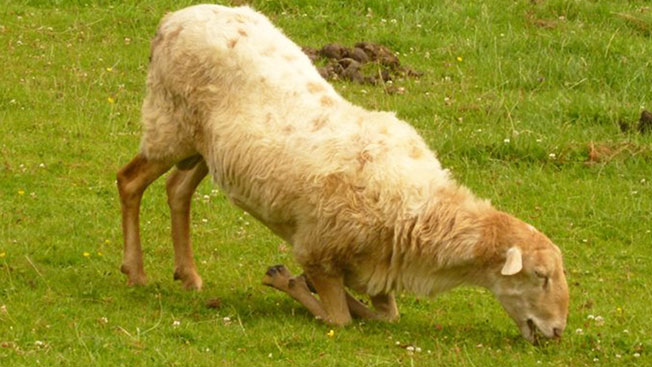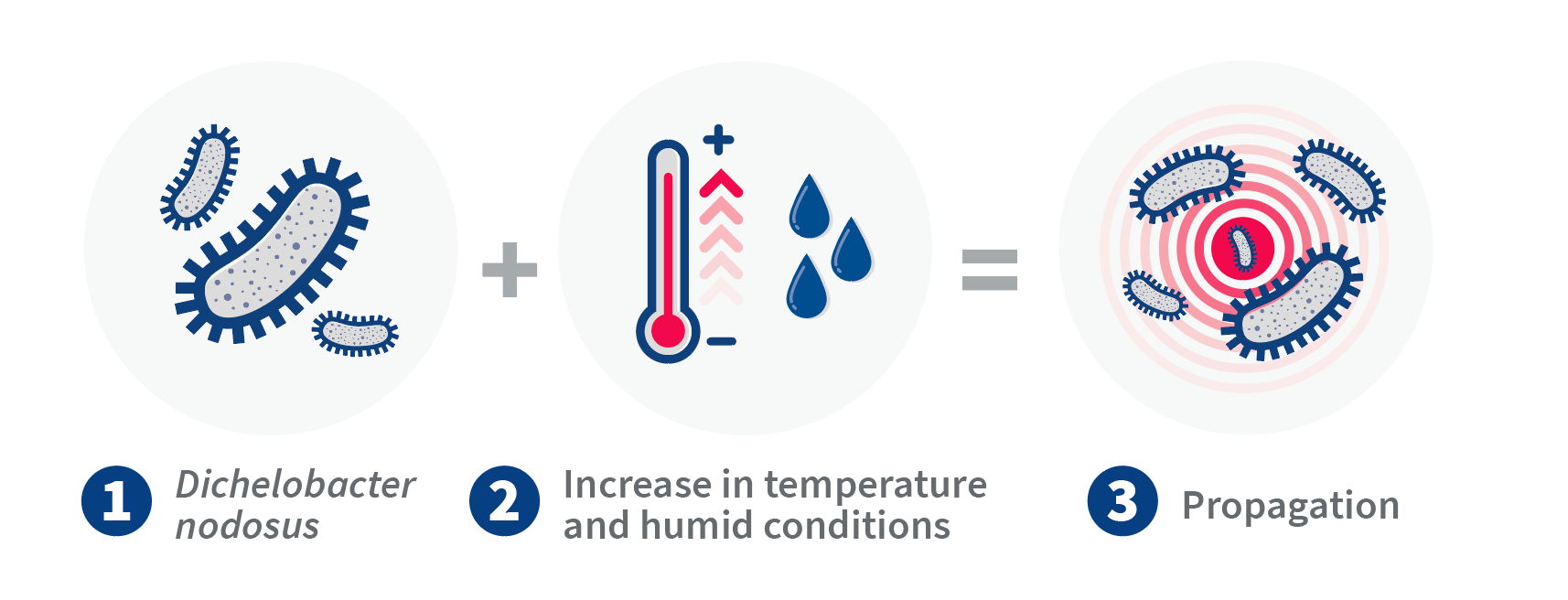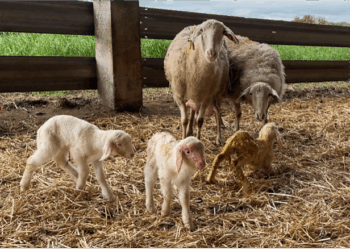The disease: Infectious Ovine Pododermatitis
Footrot is a disease that affects sheep all round the world, and is most prevalent in areas with high temperatures and high soil humidity.

This disease, also known as Infectious Ovine Pododermatitis, is mainly caused by the bacterium Dichelobacter nodosus, with Fusobacterium necrophorum as a concomitant pathogen.
There are 10 serogroups and over 20 strains of D. nodosus, the pathogen that causes the infection.
How the problem starts?
The first phase of the disease is interdigital dermatitis, also known as scald, which is caused by F.necrophorum.
This facilitates the invasion of tissues by D. nodosus, the main pathogen of footrot, which in turn promotes the development of F. necrophorum with growth factors, creating a vicious cycle.
These two anaerobic bacteria act synergistically and are always both involved.
The incubation period varies, but it is generally two weeks. The symptomatology is very varied depending on:
● Soil conditions
● Virulence of the strains
● Number of feet affected
● Duration of the disease
● Secondary complications
The principal clinical sign is lameness, and in more advanced cases we can see animals kneeling while they graze.
The disease enters the farms through the purchase of infected animals and also via fomites such as boots or vehicles. Biosecurity and vaccination against footrot are therefore very important in its prevention.
What is the principal pathogen like?
The principal virulence factor of D.nodosus are pili, extensions of the cell wall which allow the bacteria to stick to the cells and move between them.

D. nodosus takes advantage of the humid conditions and high temperatures to spread from one animal to another. Its natural habitat is the epidermis of the hoof and it can survive and multiply indefinitely.
Conclusions
● Infectious pododermatitis is a disease which affects hooves.
● Chronic animals are a reservoir of the disease in the floc.
● The optimal conditions for the disease to develop are heat and abundant rainfall.
● The disease can cause financial losses due to the animal becoming unproductive, failing to reproduce, and even dying or having to be put down.
● Vaccination of sheep against footrot is the most effective way to prevent it.




